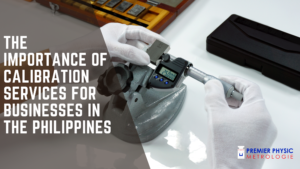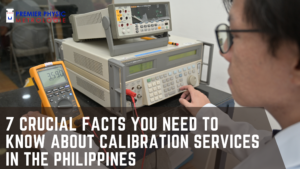In the world of measurement, accuracy and reliability are paramount. Whether you’re a scientist conducting experiments, an engineer designing products, or a technician maintaining equipment, you rely on accurate measurements to ensure quality, safety, and efficiency. Two fundamental processes that play a crucial role in maintaining measurement accuracy are calibration and verification. While often used interchangeably, these terms represent distinct procedures with different purposes. Understanding the difference between calibration and verification is essential for anyone involved in measurement activities. This comprehensive guide aims to clarify these distinctions, providing a clear understanding of each process, its importance, and how they work together to ensure reliable measurements.
Defining Calibration and Verification:
Let’s begin by defining each term:
- Calibration: Calibration is the process of comparing the readings of a measuring instrument to a known standard or reference value. It involves adjusting the instrument to bring its readings into closer agreement with the standard. The goal of calibration is to minimize measurement errors and ensure that the instrument provides accurate and reliable readings within its specified tolerance.
- Verification: Verification, on the other hand, is the process of confirming that a measuring instrument is performing as intended and meets its specified requirements. It involves checking the instrument’s performance against established criteria, often using calibrated reference standards. Verification does not necessarily involve adjusting the instrument; it simply confirms whether it is operating within acceptable limits.
Key Differences: A Comparative Analysis:
The following table highlights the key differences between calibration and verification:
| Feature | Calibration | Verification |
|---|---|---|
| Purpose | To adjust the instrument to improve accuracy | To confirm that the instrument is performing correctly |
| Action | Adjustment of the instrument | Checking the instrument’s performance |
| Outcome | Improved accuracy, traceability to a standard | Confirmation of performance, documented evidence |
| Frequency | Typically less frequent, based on risk assessment | Typically more frequent, often part of routine checks |
| Standards | Requires traceable calibration standards | May use calibrated standards or other verification methods |
| Documentation | Calibration certificate | Verification report or log |
Export to Sheets
Detailed Explanation of Key Differences:
Let’s delve deeper into some of these key differences:
- Purpose and Action: The fundamental difference lies in the purpose and action taken. Calibration is a corrective action, aiming to improve the instrument’s accuracy by adjusting it. Verification is a confirmatory action, checking whether the instrument is performing within acceptable limits without necessarily making adjustments.
- Outcome and Traceability: Calibration establishes traceability to a recognized standard, ensuring that measurements are consistent and comparable. The outcome is improved accuracy and reduced measurement uncertainty. Verification confirms that the instrument is performing as expected but doesn’t necessarily improve its accuracy.
- Frequency: Calibration is typically performed less frequently, based on factors like the instrument’s usage, stability, and risk assessment. Verification, on the other hand, is often part of routine checks and may be performed more frequently to ensure ongoing performance.
- Standards Used: Calibration requires the use of calibration standards that are traceable to national or international standards. Verification may also use calibrated standards, but other verification methods, such as check standards or performance checks, may also be employed.
- Documentation: Calibration results are documented in a calibration certificate, which provides details about the calibration procedure, the standards used, and the measurement uncertainties. Verification results are documented in a verification report or log, which records the verification date, the checks performed, and the results obtained.
The Relationship Between Calibration and Verification:
Calibration and verification are complementary processes. Calibration provides the foundation for accurate measurements by adjusting the instrument to match a standard. Verification provides ongoing assurance that the instrument maintains its accuracy over time. Ideally, a measuring instrument should be calibrated initially and then verified periodically to ensure that it continues to perform as expected. If verification reveals that the instrument is not performing within acceptable limits, recalibration may be necessary.
Importance of Calibration and Verification:
Both calibration and verification are crucial for ensuring measurement accuracy and reliability. They play a vital role in various fields:
- Manufacturing: Accurate measurements are essential for quality control in manufacturing. Calibration and verification ensure that products meet specifications and that processes are running efficiently.
- Healthcare: Accurate measurements are critical in healthcare for diagnosis, treatment, and patient safety. Calibration and verification of medical equipment ensure that measurements are reliable and that patient care is optimized.
- Environmental Monitoring: Accurate measurements are essential for monitoring environmental parameters and ensuring compliance with regulations. Calibration and verification of monitoring equipment ensure that data is reliable and that environmental assessments are accurate.
- Research and Development: Accurate measurements are fundamental to research and development. Calibration and verification ensure that experimental results are reliable and that scientific discoveries are based on sound data.
Choosing the Right Approach:
The specific requirements for calibration and verification will depend on the application, the type of instrument, and the relevant industry standards. It is important to consult with metrology experts or refer to relevant guidelines to determine the appropriate procedures and frequencies for calibration and verification.
Best Practices for Calibration and Verification:
- Develop a Calibration and Verification Plan: Establish a documented plan that outlines the calibration and verification procedures, frequencies, and responsibilities.
- Use Traceable Standards: Ensure that all calibration standards used are traceable to national or international standards.
- Maintain Accurate Records: Keep detailed records of all calibration and verification activities, including certificates, reports, and logs.
- Train Personnel: Ensure that personnel involved in calibration and verification are properly trained and competent.
- Regularly Review and Update Procedures: Review and update calibration and verification procedures periodically to ensure that they remain effective and relevant.
Conclusion:
Calibration and verification are essential processes for maintaining measurement accuracy and reliability. Understanding the key differences between these two processes is crucial for anyone involved in measurement activities. By implementing a robust calibration and verification program, organizations can ensure the quality of their products, the safety of their operations, and the reliability of their data. While calibration focuses on adjusting the instrument to improve accuracy, verification confirms that the instrument is performing as intended. Both processes are essential for building confidence in measurement results and ensuring that decisions are based on reliable data. By investing in proper calibration and verification practices, organizations can enhance their competitiveness, reduce risks, and improve overall efficiency. The investment in these processes is an investment in quality, reliability, and ultimately, success.




